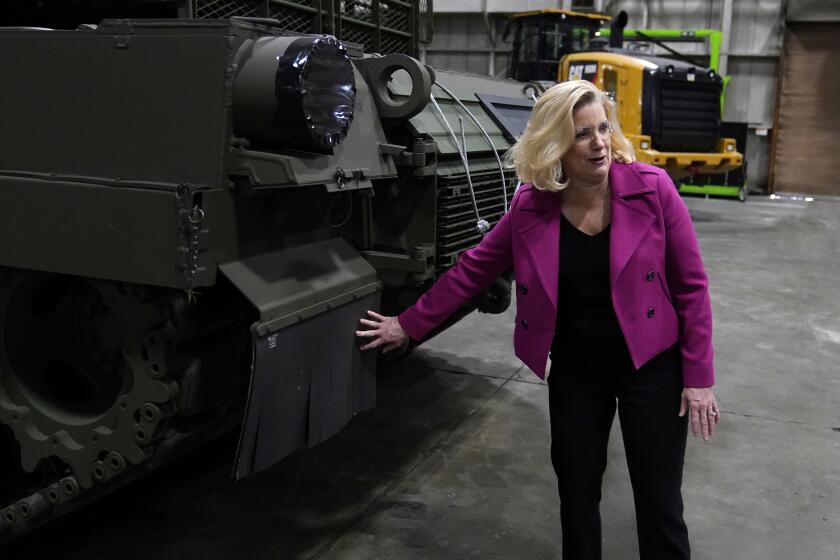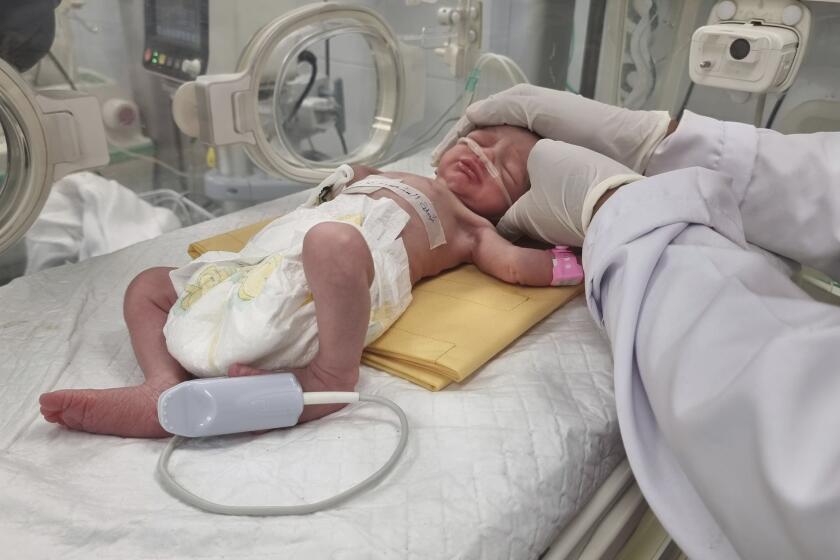More Than 1,000 Feared Dead as Egyptian Ferry Sinks in Storm
Rescue teams scoured the dark waters of the Red Sea for survivors after an Egyptian ferry carrying more than 1,400 people sank in stormy weather early Friday. A day later, just 324 survivors had been found, along with nearly 200 bodies.
Most of the rest of the passengers were feared lost.
Saudi and Egyptian ships combed the chilly waters, but the ferry had been missing for 10 hours by the time rescue efforts got underway.
There was no way to know for certain yet what caused the ferry to sink, but high winds and sandstorms were plaguing the Red Sea area when the boat disappeared.
Survivors told reporters that a fire broke out early in the voyage; at least one said he heard an explosion. The ferry was also heavy with hundreds of cars, and there weren’t enough lifeboats to save all the passengers, an Egyptian presidential spokesman said.
“The fire happened about an hour or 90 minutes into the trip, but they decided to keep going,” survivor Nabil Zikry told Associated Press. “It’s negligence.”
President Hosni Mubarak “called for a swift investigation into what happened, and this will happen parallel to the rescue efforts,” spokesman Suleiman Awad told state television. “This is not the first incident that happened, and we need to investigate why this happens. Is it a technical failure, a breach of safety regulation or what?”
After the slow start, rescue efforts appeared to be hampered by confusion. Egyptian authorities at first turned down British and American offers to send ships to aid the hunt for survivors. A British warship on patrol nearby had already turned toward the scene when Cairo called it off. As the hours passed, however, the Egyptian government reversed its decision and asked for help.
Frantic families huddled at the Egyptian port town of Safaga, where the ferry had been due to arrive before sunrise Friday. The boat was making the 120-mile crossing from the Saudi port of Duba to Egypt, carrying mostly Egyptian workers who journey to the oil-rich Persian Gulf state to make a living. Many struggling Egyptians opt for the water crossing on their visits home because it is cheaper than flying.
At least 2,000 friends and family members milled near the gates of the port Friday night, waiting in anger and confusion for news of their loved ones. Officials wandered through the crowd, reading the names of passengers. The atmosphere was chaotic and tense; riot police were deployed in case of unrest.
“We don’t know anything yet,” said Hassan Suleiman Youssef, a 47-year-old Arabic teacher. After seeing news of the ferry disaster on television, Youssef had driven to Safaga hoping for word of his brother-in-law, who was on his way home after guiding pilgrims in the Muslim rite of hajj.
“No one told us if he’s dead or alive,” said Youssef, standing near the port in traditional robes. “We are still waiting.”
Survivors fumed about spending nearly 24 hours in the water before help arrived. “Around me people were dying and sinking,” survivor Ahmed Elew told AP. “Who is responsible for this?”
The ship is believed to have sunk about 57 miles from the Egyptian port of Hurghada. A team of federal investigators was immediately airlifted to Safaga to open an investigation of the sinking. Along with experts from air and marine ports security, five forensic specialists and 20 doctors were present to begin identifying the bodies.
The 35-year-old boat, which was used in Europe for years before being sold to the Egyptian owner, El Salam Maritime, was carrying more than 1,100 Egyptians and almost 100 Saudis. There were also Syrians, Palestinians and at least one passenger each from the United Arab Emirates, Oman, Canada, Sudan and Yemen.
A spokesman for El Salam in Cairo said it was inspected every 48 hours in Egypt and Saudi Arabia. The ship was in good repair, said fleet manager Mamdouh Oraby.
“It looks abnormal because there was no distress message,” Oraby said by telephone. “With the new, modern communication system, it’s hard not to give any signal or message. It looks like it went down quickly.”
The massive ferry was carrying 1,317 passengers, along with 97 crew members, when it sank, Oraby said. The craft offered varying accommodations, depending on the fare paid. Passengers could buy tickets for Pullman seats, the deck or first- and second-class beds.
The ferry, called Al Salam Boccaccio 98, was registered in Panama. Egyptian regulations prevent any boat older than 25 years from flying the Egyptian flag, said Bassem Faisal, an operations manager in another Egyptian maritime company.
“What some companies do is go and register their ships in Panama or Cyprus, where regulations are very much relaxed,” he said. “As for the Egyptian authorities, they can do nothing if the ship’s registration papers are legal.”
With public outrage mounting, a longtime member of the ferry’s staff appeared on Egyptian state television to counter criticism.
“Accidents happen. We shouldn’t jump to conclusions that there was something wrong with the ship,” said Dr. Emad Atriss, the former head of the ferry’s medical unit.
“I don’t want the Egyptian people to lose confidence in the Egyptian means of transportation. Corruption or not, these are people’s lives we’re talking about. Corruption does not extend to taking out people’s lives,” he said.
A similar ferry sinking in the same area of the Red Sea killed 470 people in 1991 after the ship struck a coral reef. It took rescuers nine hours to respond to an SOS message.
A report by Egypt’s Ain Shams University later concluded that a lone ship and a single helicopter were the only crafts hunting for survivors for the first 24 hours. The tragedy quickly brought a worldwide outpouring of sympathy.
In Washington, the White House issued a statement saying President Bush “extends our deepest condolences for the loss of life.”
“Our thoughts and prayers are with all Egyptians and citizens of other nations who suffered losses in this terrible accident,” it continued. “The United States stands ready to assist the governments of Egypt and Saudi Arabia in the process of rescue and recovery.”
*
(BEGIN TEXT OF INFOBOX)
Accident at sea
Hundreds died when a ferry sank in the Red Sea between midnight and 2.a.m. Friday.
Ferry Al Salam Boccaccio 98
Width: 77 feet
Built: Italy 1970
Gross tonnage: 11,779
Passenger capacity: 1,487
Garage capacity: 220 standard European cars (42 vehicles were on board)
Owner: El Salam Maritime
--
Other ferry disasters
* Sept. 26, 2002: Senegalese ferry capsizes in a storm off Gambia, West Africa;
Deaths: about 1,000
* May 21, 1996: Ferry sinks in Lake Victoria, East Africa;
Deaths: 500-800
* Sept. 28, 1994: The Estonia sinks during a storm in the Baltic Sea; Deaths: 852
* Feb. 16, 1993: Ferry sinks between Jeremie and Port-au-Prince, Haiti; Deaths: 500-700
* Dec. 14, 1991: Salem Express goes down in the Red Sea near Safaga, Egypt; Deaths: 400-500
* Dec. 20, 1987: The Dona Paz collides with a tanker in the Philippines in the worldOs worst peacetime shipping disaster; Deaths: 4,340
--
Sources: Associated Press, BBC, ESRI, Reuters, graphics reporting by
Tom Reinken
*
Stack reported from Beirut and Hamalawy from Cairo. Special correspondent Jano Charbel in Safaga contributed to this report.
More to Read
Start your day right
Sign up for Essential California for news, features and recommendations from the L.A. Times and beyond in your inbox six days a week.
You may occasionally receive promotional content from the Los Angeles Times.






